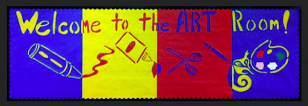Rowe artists practiced making monoprints using tempera paint and then used them to wrap up their pinch pots to take home.
Tuesday, December 15, 2020
Sunday, December 13, 2020
Colorful Pots and Yayoi Kusama
 |
| Kindergarten Painted Pots & First Grade Glazed Pots |
We learned about Japanese artist, Yayoi Kusama by reading Yayoi Kusama Covered Everything in Dots and Wasn't Sorry. We used her dot style to paint our pots in first grade and make wrapping paper in Kindergarten.
Monday, November 30, 2020
Pinch Pots
We learned about two traditional potters: Juan Quezada, by watching a reading of The Pot That Juan Built and Maria Martinez, by watching a few clips from a documentary.
We then learned the steps to create a pinch pot.
Kindergarten artists were able to turn the pinch pots into any shape.
First-grade artists will be using glaze and therefore their pots were made into bowls or drinking cups.
Friday, November 20, 2020
Thursday, October 15, 2020
Printmaking, Texture, and Creative Trees
Continuing with our talks about the Elements of Art we learned more about Lines, Pattern and introduced Texture.
Some classes worked on printmaking with leaves and paint. We talked about how the bumped up texture of the veins of the leaves made it so we could make prints.
We also talked about how artists use pattern to add Texture and detail. Students were able to use sharpies to add pattern to pre-printed leaves to show more texture.
We learned the difference between texture and visual texture and talked about how artists use line, pattern and color to show visual texture.
Monday, October 5, 2020
Inspiration
The first few classes this year have focused on the Elements of Art including Color, Line & Pattern. We also discussed just making your mark and getting started, Inspiration, and color mixing.
We watched a read-aloud of The Dot, by Peter Reynolds, and then made our marks on large white dots of color diffusing paper with Primary color markers (red, yellow & blue). We then talked about color mixing and used droppers to add water to our colorful dots to watch the Primary colors mix into the Secondary colors.
Tuesday, March 10, 2020
Tjanpi Desert Weavers
 These artists use materials collected from the lands around them to create beautiful baskets and animal sculptures.
These artists use materials collected from the lands around them to create beautiful baskets and animal sculptures. After seeing a few examples of their work we experimented with pipe cleaners and yarn to create our own mini animal sculptures.
After seeing a few examples of their work we experimented with pipe cleaners and yarn to create our own mini animal sculptures.Tuesday, March 3, 2020
Learning about Depth
We discussed that our paintings had a foreground, middle ground, and background.
We finished the mountainscapes by printing a moon and using a pipette to add a snowstorm.
Tuesday, February 11, 2020
Friday, January 31, 2020
Colorful Chalk Cityscapes with Printed lines
 Before the break, we learned about different types of lines, for this project we discussed how lines go together to make shapes. We learned that everything is made out of shapes and lines. We then read the book Wow! City!, by Robert Neubecker and looked at a few Cityscapes by Paul Klee, James Rizzi, and Brian Whelan and talked about the shapes we see the most of in a city and what types of lines make those shapes.
Before the break, we learned about different types of lines, for this project we discussed how lines go together to make shapes. We learned that everything is made out of shapes and lines. We then read the book Wow! City!, by Robert Neubecker and looked at a few Cityscapes by Paul Klee, James Rizzi, and Brian Whelan and talked about the shapes we see the most of in a city and what types of lines make those shapes. 


















